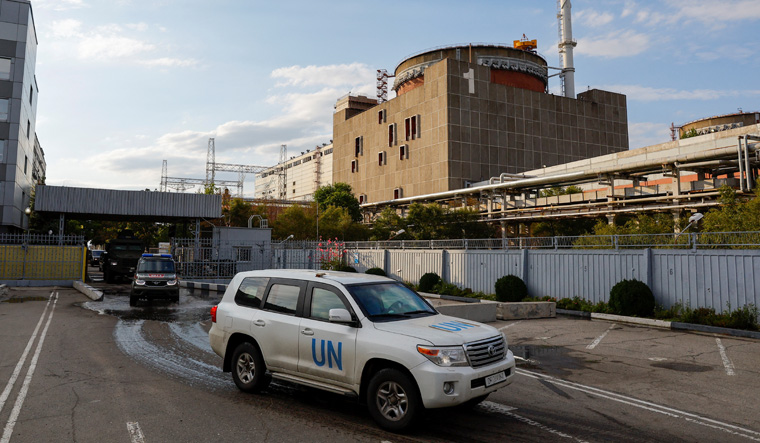Ukraine's nuclear agency has put the last reactor at the Zaporizhzhia Nuclear Power Plant on cold shutdown as a precautionary measure to avoid any catastrophic incident due to the collapse of Kakhovka dam. The plant reportedly draws water from the dam for its cooling plant.
“The last reactor was put into cold shutdown on Thursday,” Energoatom, the Ukrainian nuclear agency said in a statement late Friday, adding that other factors in the decision included shelling near the site which has damaged overhead lines connecting the plant to Ukraine's energy system.
Energoatom said that there was no direct threat to the Zaporizhzhia plant due to the breach of the Kakhovka dam further down the Dnieper River, which has forced thousands of people to flee flooding and also sharply reduced water levels in a reservoir used to help cool the facility.
Russian forces continued pummeling the country with missiles and drones overnight, with Ukrainian officials reporting at least four deaths and damage to a military airfield.
Five out of six reactors at the Zaporizhzhia Nuclear Power Plant, which is occupied by Russian forces, are already in a state of cold shutdown, in which all control rods are inserted into the reactor core to stop the nuclear fission reaction and generation of heat and pressure.
With all nuclear reactions stopped, temperatures and pressure inside reactors gradually decline, reducing the required intensity of water cooling of the radioactive fuel. This is a nuclear power plant's safest operating mode. Energoatom employees are still working at the power plant, although it remains controlled by the Russians.
The site's power units have not been operating since September last year. The head of the International Atomic Energy Agency is due to visit Ukraine in the coming days.
Analysts and Russia say that Ukraine has launched a counteroffensive in southern Ukraine, potentially aiming to retake territory near the plant.
In a statement on Friday, IAEA said the agency will provide vital assistance to Ukraine in coping with the devastating consequences of dam disaster.
“Through the use of nuclear techniques, we will determine the effects on potable water, human health, and soil and water management and assess the integrity of critical infrastructure. Ukraine can count on our assistance now and in dealing with the longer-term consequences of this disaster,” IAEA Director General Rafael Mariano Grossi said.
“It remains unclear at what height the Kakhovka reservoir will stabilize and whether it will do so before it reaches a level where the pumps can no longer be operated,” Grossi added. Grossi alternate resources for water for cooling plant have sufficient water storage.
“Even if there is no short-term threat, the dam disaster is causing major new difficulties for the Zaporizhzhia nuclear power plant at a time when the nuclear safety and security situation is already extremely fragile and potentially dangerous during the military conflict,” Grossi said.
(With PTI inputs.)


